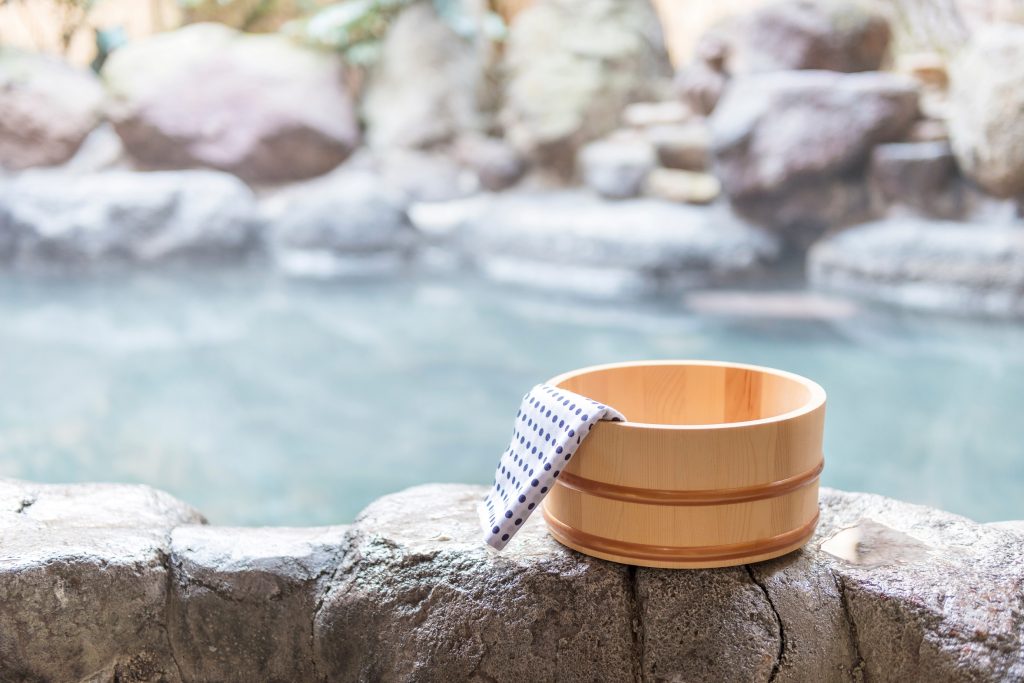Hot springs, or onsen, hold a special place in Japanese culture, offering not only a relaxing retreat but also a glimpse into the nation’s rich history and traditions. For centuries, these natural geothermal wonders have provided healing, relaxation, and socializing opportunities for locals and visitors alike. In this article, we will delve into the fascinating history of hot springs in Japan and explore the proper way to enjoy this cherished cultural experience.

A Journey through Time
The history of hot springs in Japan dates back thousands of years. Japanese folklore attributes their discovery to the divine powers of the gods. As legend has it, the god Izanagi and the goddess Izanami dipped a spear into the ocean, and when they withdrew it, hot drops of water formed the first hot spring. These natural springs were believed to possess healing properties and were revered as sacred places.
Over time, hot springs became popular among the nobility and samurai class, who sought their therapeutic benefits. Emperors, shoguns, and daimyos (feudal lords) built private bathing facilities to enjoy the healing waters. As Japan’s feudal society evolved, hot springs became accessible to the general public, giving rise to communal bathing culture.
The Onsen Experience
To fully appreciate the hot springs in Japan, one must understand and respect the customs associated with onsen etiquette. Here are some guidelines to ensure a pleasant and authentic onsen experience:
Research and Choose an Onsen: Japan boasts thousands of hot springs, each with its unique qualities and surroundings. Whether you prefer a rustic mountain retreat or a modern urban oasis, research and select an onsen that aligns with your preferences.
Separation of Gender: Traditional onsen have separate bathing areas for men and women. This separation maintains modesty and allows bathers to enjoy the experience without feeling self-conscious. However, some modern onsen and ryokans (traditional inns) offer mixed-gender bathing or private baths for couples or families.
Preparing for the Bath: Before entering the bathing area, thoroughly wash your body at the provided washing stations. Use the shower or wash buckets and soap to cleanse yourself and ensure you are clean before entering the hot spring.
No Swimsuits: In most traditional onsen, bathing suits or clothing are not permitted. This practice aims to maintain cleanliness and ensure that the healing properties of the mineral-rich waters come into direct contact with the skin.
Tattoos and Etiquette: While attitudes toward tattoos have become more relaxed, many traditional onsen still enforce a no-tattoo policy. Tattoos have long been associated with organized crime in Japan, and some establishments may view them as a sign of disrespect or disruption to the peaceful atmosphere. It is essential to check the policy in advance or consider using private onsen facilities if you have visible tattoos.
Relaxation and Tranquillity: Onsen bathing is not just about soaking in hot water; it is a ritual of relaxation and tranquillity. Enjoy the serene atmosphere, let go of stress, and immerse yourself in the rejuvenating qualities of the hot springs. Respect the silence and avoid disruptive behaviour.
Follow the Rules: Each onsen may have specific rules or guidelines posted. These rules may include not dipping towels into the water, not splashing excessively, and refraining from taking photographs. Adhering to these rules ensures the comfort and enjoyment of all bathers.
The Therapeutic Benefits
Beyond the cultural and social aspects, hot springs in Japan offer numerous therapeutic benefits. The mineral-rich waters are believed to alleviate various ailments, including joint pain, muscle soreness, and skin conditions. The different types of hot springs, classified by their mineral composition, offer specific health benefits:
Sulphur Springs: These springs, known as “rotenburo,” contain high levels of sulphur, which can help treat skin conditions like eczema and psoriasis. The distinct smell of sulphur is often associated with these springs.
Sodium Chloride Springs: These springs, referred to as “kuroyu,” are rich in sodium chloride and are known to improve blood circulation, relieve muscle tension, and promote relaxation.
Carbonated Springs: Known as “tansanburo,” these springs contain carbon dioxide, which stimulates blood flow and has a gentle massaging effect on the skin, promoting a sense of rejuvenation.
Iron Springs: Iron-rich springs, called “chalybeate springs,” are believed to increase the production of red blood cells and improve anaemia symptoms. The water has a reddish-brown hue due to its iron content.
Alkaline Springs: “Yunohana” is the term used for alkaline springs, which have a high pH level. These springs are thought to have a moisturizing effect on the skin, leaving it soft and smooth.
Calcium Springs: Springs rich in calcium, known as “yakuseki,” are believed to strengthen bones and promote healthy teeth. Bathing in these springs can have a soothing effect on joint and muscle pain.
Radon Springs: Springs that emit small amounts of radon gas, called “radon-yu,” are believed to have a positive impact on chronic pain conditions such as rheumatism and arthritis.
Embracing Wellness and Culture
Hot springs in Japan are not merely about physical healing; they offer a holistic wellness experience. Many onsen establishments provide additional amenities such as massage services, saunas, and traditional Japanese meals, allowing guests to immerse themselves in a complete relaxation retreat.
In addition, hot springs provide an opportunity to connect with Japanese culture and traditions. Staying at a traditional ryokan, where onsen bathing is often an integral part of the experience, allows guests to indulge in Japanese hospitality, wear yukata (light robes), savour kaiseki (multi-course) meals, and sleep on futon beds.
Conclusion
Hot springs, or onsen, have been an integral part of Japanese culture for centuries, offering relaxation, rejuvenation, and a glimpse into the nation’s history. By respecting the customs and etiquette associated with onsen bathing, visitors can fully appreciate the healing properties and tranquillity of these natural wonders. Whether it’s the therapeutic benefits, the calming atmosphere, or the cultural immersion, hot springs in Japan provide a soothing journey for both body and soul. So, immerse yourself in this time-honoured tradition and let the healing waters of onsen wash away your worries and invigorate your spirit.










